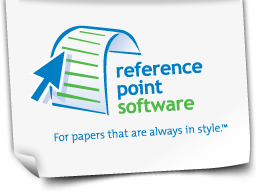Proper Usage and Formatting of MLA Style Citations
Mastery of MLA style citations conveys intelligence, authority and a commitment to accountability and respect for original source material. Proper use of the MLA style format inspires trust in your readers (and instructors) and earns you, as the writer, a healthy dose of credibility.
There are some specific things to consider when formatting MLA style citations. When using MLA style citations for in-text citations, cited works, the preferred way of doing this is through the use of a parenthetical format. This method involves placing abbreviated relevant source information in parentheses right after the quote or reference, usually just a word or two.
Example:
- It has been said that following the MLA citation guidelines can be just as challenging as writing your paper (Houghton and Houghton).
The actual information used in parentheses depends upon the nature of the source. For in-text citations, there can be author-page style, citations for print sources with a known author, citations for print sources with no known author, and a number of other configurations.
Generally, if the author’s name is known, the last name should be in the parentheses following the sentence that contains the reference. If it is not known, you can use a word or two relevant to the source. The full notation of the work will then be included in the alphabetized Works Cited at the very end of the paper.
In the works cited list, as a general rule, works are formatted as follows:
Houghton, P. M. and T. J. Houghton. MLA: The Easy Way! [Updated for MLA 7th Edition]. Rev. ed. Flint: Baker College, 2009. Print.
Common sense, good judgment and a commitment to ethics will ultimately help you determine the necessity of documenting source material. When considering MLA style citations, widely known quotations, historical documents, popular sayings or familiar proverbs do not need to be cited.
However, sometimes there are gray areas that require a judgment call. In all cases, the likely audience for the paper should be taken into consideration when deciding whether or not a citation is necessary. Ask yourself if the audience is likely to be readily familiar with the reference and source, or should credit be given?
While it is extremely satisfying to complete a paper from beginning to end using your own knowledge, expertise and resources, there are ways to minimize the time and energy you must spend doing logistical work like formatting and adhering to expected guidelines. Implementing available resources and shortcuts frees up time and energy for the more creative and enjoyable aspects of writing a paper.
When you are liberated from the tedium of carefully researching what must be done in order to fit specific formatting guidelines and expectations, you can then really put energy and focus on the “meat” of the paper. This is one area where formatting software can help. Eliminating the busywork and guesswork from a project allows creativity to flow and your passion for the subject matter to shine through unobstructed.
David Plaut is the founder of Reference Point Software (RPS). RPS offers a complete suite of easy-to-use formatting template products featuring MLA and APA style templates, freeing up time to focus on substance while ensuring formatting accuracy. For more information, log onto http://www.referencepointsoftware.com/ or write to:
info @ referencepointsoftware.com
Reference Point Software is not associated with, endorsed by, or affiliated with the American Psychological Association (APA) or with the Modern Language Association (MLA).
